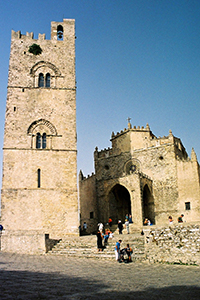Speaker
Description
Introduction: Targeted radionuclide therapy using 161Tb is a promising approach for β- and Auger electron therapy.1 Moreover, the availability of the diagnostic radionuclides 152/155Tb is of interest in a theranostic setting.2-4 Heat-sensitive biomolecules (e.g. antibody fragments, etc.) are increasingly being used as carriers in radiometal-based radiopharmaceuticals. These molecules, however, require mild radiolabeling conditions. In this study, we evaluated DOTA-NHS as potential bifunctional chelator for mild Terbium radiolabelling.
Methods and results: Cold complexation studies were performed with DOTA-NHS (1 eq.) and natural TbCl3 (0.5 eq.) in 0.1M acetate buffer, pH 4.7 at 25 °C. The complexation was evaluated using high-resolution mass spectrometry (UV-HRMS-ESI-TOF, Bruker Maxis Impact). Complexation was complete after 60 minutes. The hydrolysed complex resonance is observed in the mass spectrum at m/z 561.1081 (theoretical mass calculated for C16H25N4O8 [M+H]+: 561.0999). Radioactive tests were performed using 161Tb that was produced and purified at SCK·CEN (production in the BR-2 reactor: 160Gd(n, γ)161Gd -> 161Tb). In these tests, 1.3 MBq 161TbCl3 was added to 0.1, 1, 5 or 10 µM DOTA-NHS in a total volume of 1 mL and incubated at 25 or 40°C. Radiochemical yields were determined at different time points using instant thin layer chromatography (iTLC) eluted with acetonitrile;water (75:25 v/v) which were counted in a gamma counter. At 25 °C, 161Tb was easily complexed using 5 µM of DOTA-NHS resulting in near-quantitative yields (96%) after 60 min. At 40 °C, near-quantitative yields (97%) were obtained using 1 µM of DOTA-NHS after 60 minutes.
Conclusion: DOTA-NHS is a suitable candidate for future radiolabelling studies of heat-sensitive biomolecules. Other chelators of interest will be evaluated and in vitro and in vivo stability of the Terbium-complexes will be assessed.
References
1. Dolgin et. al., Nat. Biotechnol., 2018; 36: 1125–1127.
2. Orvig et. al., Chem. Rev., 2019; 119: 902-956.
3. Lehenberger et. al., Nucl. Med. Biol., 2011; 38: 917-924.
4. Schibli et. al., Eur. J. Nucl. Med. Mol. Imaging, 2014; 41: 476–485.
